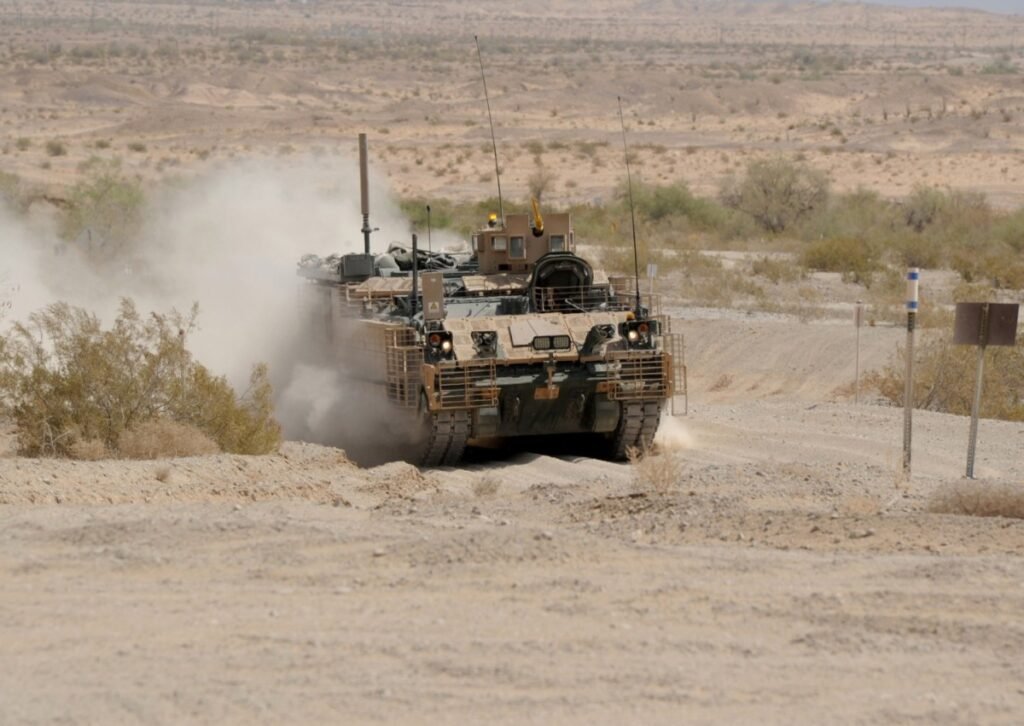The U.S. Army Yuma Proving Ground (YPG) is leading the way in transformative efforts within the Army.
A crucial part of this transformation focuses on mobility. The U.S. Army Yuma Test Center (YTC) utilizes roughly 200 miles of surveyed road courses to test next-generation vehicles at real-world speeds.
The YTC simulates the diverse conditions soldiers face in desert combat zones. Factors like summer dust storms and extreme heat can severely test even the toughest combat vehicles. From smooth pavement to rugged desert paths, YTC’s courses represent various scenarios similar to those encountered by soldiers in vehicles.
“These natural environments really stress the systems in ways we can’t replicate elsewhere,” remarks Marconixen, Chief of the Combat Systems Branch. “Our Middle Eastern course features varied terrains and inclines, where vehicles face different forces. Our hilly courses, with slopes up to about 30%, really push the limits of the vehicles.”
Testing plans for vehicles can vary widely, just like the terrain on which they are assessed.
“It depends on the specific customer need. Are we testing a complete vehicle or a particular component like a new cooling system?” Nixen explained. “We handle everything from subsystems to entire systems.”
Add to that the Arctic Regional Test Center (ARTC) and the Tropical Regional Test Center (TRTC), which rigorously evaluate military vehicles in extreme cold and jungle conditions, respectively.
YPG Commander Colonel John Nelson stated, “The three environments we offer allow material developers to identify potential issues without incurring major costs post-procurement.”
For reliability, availability, and maintainability (RAM) tests, vehicles travel many miles along various terrains, simulating missions. Test operators continuously check the performance of advanced electronics while also evaluating braking, acceleration, and handling on uneven surfaces. Liquid samples from vehicles are taken for analysis throughout the tests. Evaluators compile extensive data on vehicle conditions to identify wear patterns and forecasting possible issues. YPG also provides extensive ranges for live fire testing of weapons from both stationary and moving vehicles.
“The YPG not only supports the Army’s transformation but also assists in the testing of allied forces,” Nelson added. “It also offers private industries insight into technology performance, helping us stay informed about new technological advancements.”
This has led to YPG hosting tests on a range of equipment, from joint light tactical vehicles (JLTV) to armored multipurpose vehicles (AMPVs). These successors to the longstanding M113 armored personnel carriers have been critical to modern military operations. Almost all American automotive manufacturers utilize YTC and ARTC for testing purposes.
“We absorbed lessons from two decades of modern warfare and integrated that with what we previously learned in developing the ‘Big Five’ weapon systems. This has enabled us to develop solutions to counter various threats,” a spokesperson noted.
This focus extends to platforms like the XM30 mechanized infantry combat vehicle, which is currently being assessed using surrogate vehicles at YTC.
“YPG has a rich history of testing armored vehicles dating back to World War II,” Nelson highlighted. “Every major combat and support platform has passed through here, including the upcoming XM30 and M1E3 Abrams, which aim to demonstrate their reliability and ease of maintenance.”
“As we see more unmanned vehicles emerging in the private sector, we’re noticing costs dropping and technology maturing,” Obradovich noted. “YPG’s flexibility and commitment to support will be valuable for the Army and the Department of Defense as they strive for mission success.”







